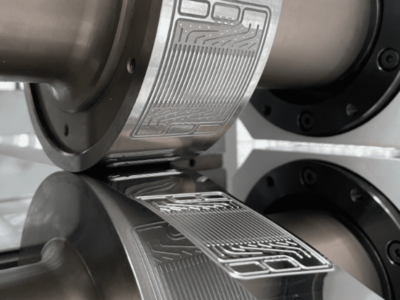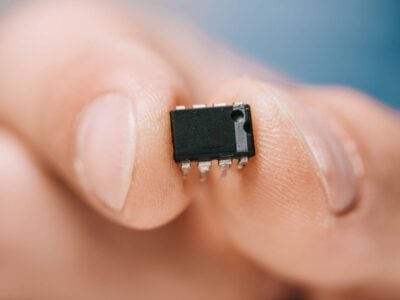
Battery mods boost New York respirator
Positive Air Pressure Respirator (PAPR) systems are used by staff as a personal protective equipment (PPE) when treating patients. While the St. Lawrence Health System (SLHS) in New York atate has a supply of PAPRs, hospitals did not have enough batteries or battery chargers to operate the systems around the clock. The Covid-19 pandemic meant purchasing more batteries or chargers is not currently an option, especially in the hardest hit areas such as New York.
Bill Jemison, Dean of the Coulter School of Engineering at Clarkson University and Tony Collins Professor of Innovative Engineering Culture and an electrical engineer, suggested modifying the PAPRs to operate from batteries that are readily available.
Jemison quickly had a working prototype of the modified PAPR respirator unit, and the team demonstrated the working prototype to the local hospital. Kylie Broughal, a physician’s assistant with expertise in infectious diseases (above) showed the Clarkson team how to test the units for proper airflow.
A 13-hour test showed that the flow rate could be maintained over a full 12 hour shift with the new batteries and tested in a clinical environment. Last week managers at the Canton-Potsdam hospital asked Clarkson to modify an additional five PAPR units, which were delivered the following morning. Seven more units have since been delivered.
“There has been a tremendous outpouring of goodwill by people who want to help, but Erin (Draper) and I felt it was important to address the specific needs of our health care providers,” said Jemison said.
“The healthcare professionals are the real heroes of this pandemic,” said Jacob Weller, engineering shop supervisor at Clarkson who managed the modifications. “It is nice to be able to help them stay safe. The units we modified will allow two shifts of six people to stay protected for their entire shifts if SLHS & CPH enacts a protocol that requires the continuous use of the PAPR.”
Next: Related respirator and ventilator articles
- VENTILATOR SPEC SAYS TO CALL AN ELECTRONIC ENGINEER TO MEET BATTERY CHALLENGE
- HIGH SPEED IMAGING VIDEO SHOWS HOW FAR A COVID-19 SNEEZE REACHES
- FRENCH GROUP TO PRODUCE 10,000 VENTILATOR SYSTEMS
- VENTILATOR TECHNOLOGY TAKES CENTRE STAGE
- SEAT STARTS PRODUCTION OF VENTILATOR BASED ON WINDSCREEN WIPER MOTOR
 If you enjoyed this article, you will like the following ones: don't miss them by subscribing to :
eeNews on Google News
If you enjoyed this article, you will like the following ones: don't miss them by subscribing to :
eeNews on Google News




